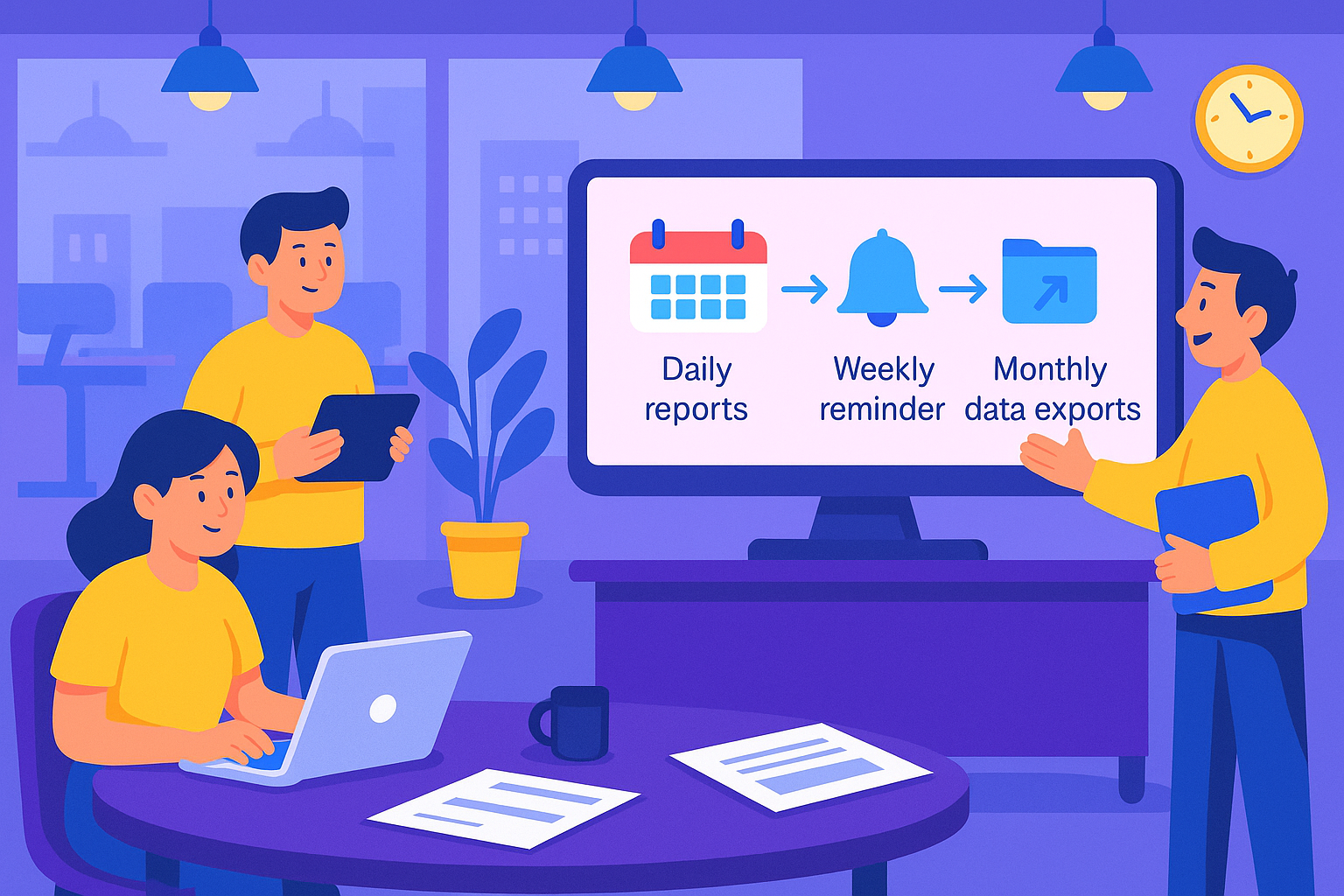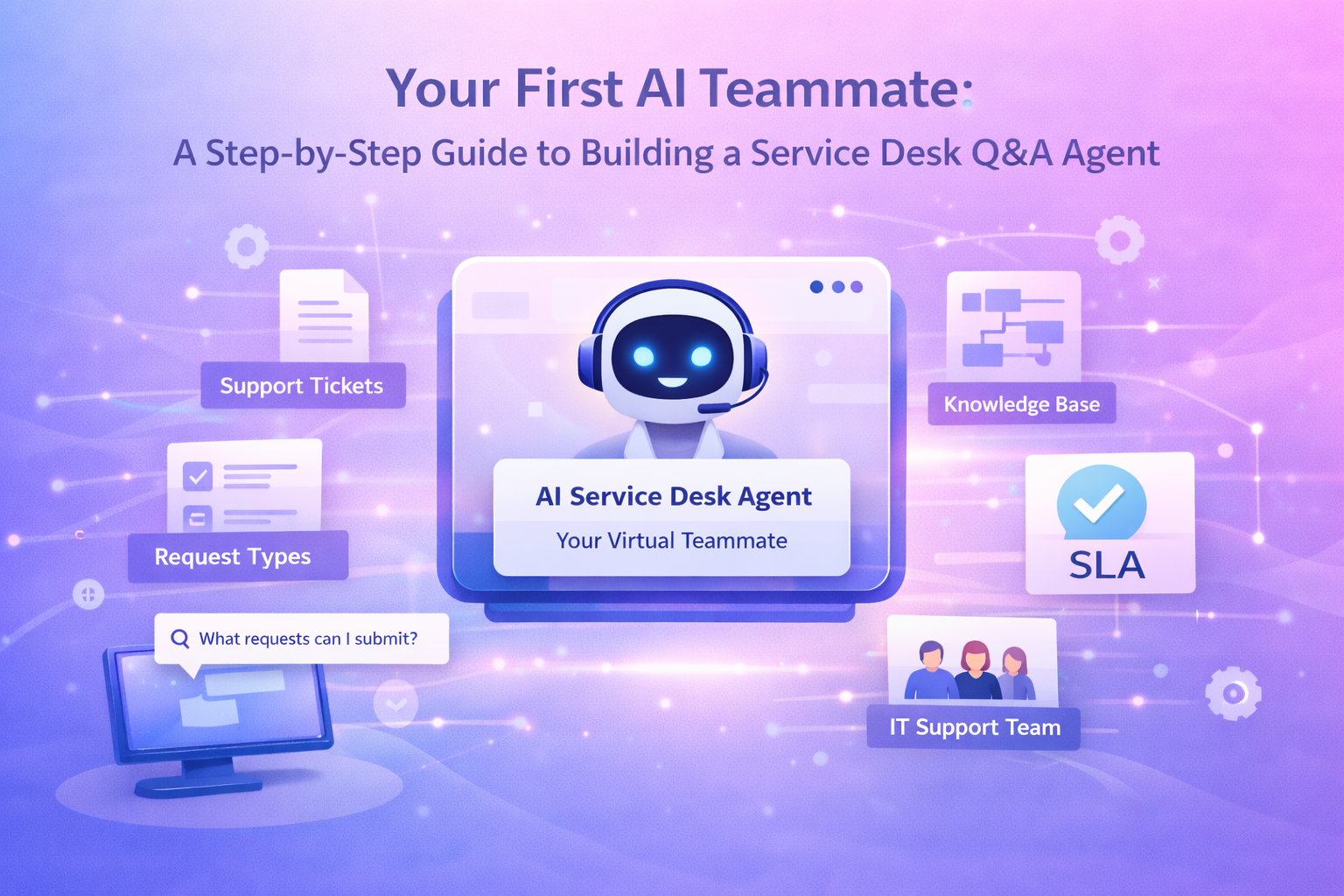In many organizations, Friday afternoons are a scramble for project managers.
Collecting updates, compiling tasks, and emailing weekly summaries to stakeholders is repetitive, time-consuming, and often stressful. On busy weeks, the process may be delayed — or skipped entirely — risking misalignment among team members and decision-makers.
With Yeeflow’s Scheduled Workflow feature, this weekly rush can be eliminated. Once configured, your report is generated and sent automatically at the same time each week, ensuring timely delivery, consistent format, and zero manual effort.
The Scenario
Company Profile: ACME Corp, a global enterprise with a fast-growing sales organization operating across multiple regions.
The Pain Point: Every Friday, sales managers spend hours pulling deal data from the CRM, calculating totals, formatting results into a report, and sending updates to executives. This repetitive process is time-consuming, prone to errors, and often delays the delivery of critical information.
The Goal: Deliver accurate, timely Weekly Top Sales Reports to leadership teams every Friday evening — without requiring manual effort.
The Solution: Scheduled Workflow in Action
Using Yeeflow’s Scheduled Workflow, ACME’s sales operations team configured an automation to:
- Trigger automatically every Friday at 6:00 PM, aligned with the sales team’s local time zone.
- Query the latest sales deals from the CRM, filtering for top opportunities and closing activities.
- Calculate total sales value and capture key deal details.
- Leverage AI Assistant to format the data into a clean, structured HTML table.
- Send a polished weekly email report directly to stakeholders’ inboxes — complete with totals and generation date.
Why Automate? Manual vs. Scheduled Workflows
Without Scheduled Workflow
Each week, sales managers must:
- Pull data from the CRM.
- Calculate deal totals.
- Format tables and summaries.
- Manually email the report.
Any change in format, recipients, or timing means redoing the process each time.
With Scheduled Workflow
Instead, configure the automation once:
- Automatically pulls the latest deal data.
- Calculates totals and formats results consistently.
- Sends the report at the scheduled time.
Future adjustments — such as updating recipients or tweaking templates — are made once in the workflow, without redoing steps weekly.
The Difference
With a manual process, reporting work is repeated every week.
With a Scheduled Workflow, you set it once and let Yeeflow run it automatically — saving time, ensuring accuracy, and keeping updates consistent.
The Result
- Time Saved: Sales managers recover ~1 hour every week.
- Accuracy Ensured: Reports always use the latest CRM data, consistently formatted.
- Improved Stakeholder Alignment: Executives receive updates on time, every Friday evening, ready for review before the weekend.
Beyond Weekly Reports: Other Use Cases
Scheduled Workflows go beyond sales reporting. They can automate recurring processes across departments, including:
- 📈 Monthly Sales Performance Dashboards – Deliver monthly executive summaries on the 1st day of each month.
- 🛠 Quarterly Compliance and Maintenance Checks – Identify overdue tasks and notify responsible teams.
- 📅 AI-Generated Marketing Content – Each Monday, pull upcoming campaigns, auto-generate draft posts with AI, and share them with the marketing team.
Best Practices for Scheduled Workflows
- Align with Business Cycles: Schedule triggers to match reporting deadlines.
- Filter for Relevance: Ensure reports contain only the most meaningful data.
- Test Before Launch: Run manual tests to validate formatting and accuracy.
- Monitor & Optimize: Review logs regularly to confirm on-time execution and refine settings.
Final Thoughts
Scheduled Workflows transform repetitive, time-bound tasks into reliable, hands-off processes. By automating recurring workflows, organizations reduce manual effort, avoid missed communications, and improve efficiency.
Whether it’s weekly sales reports, monthly summaries, or compliance reminders, Yeeflow ensures critical tasks happen exactly when they should — without adding to your team’s workload.





.png)

